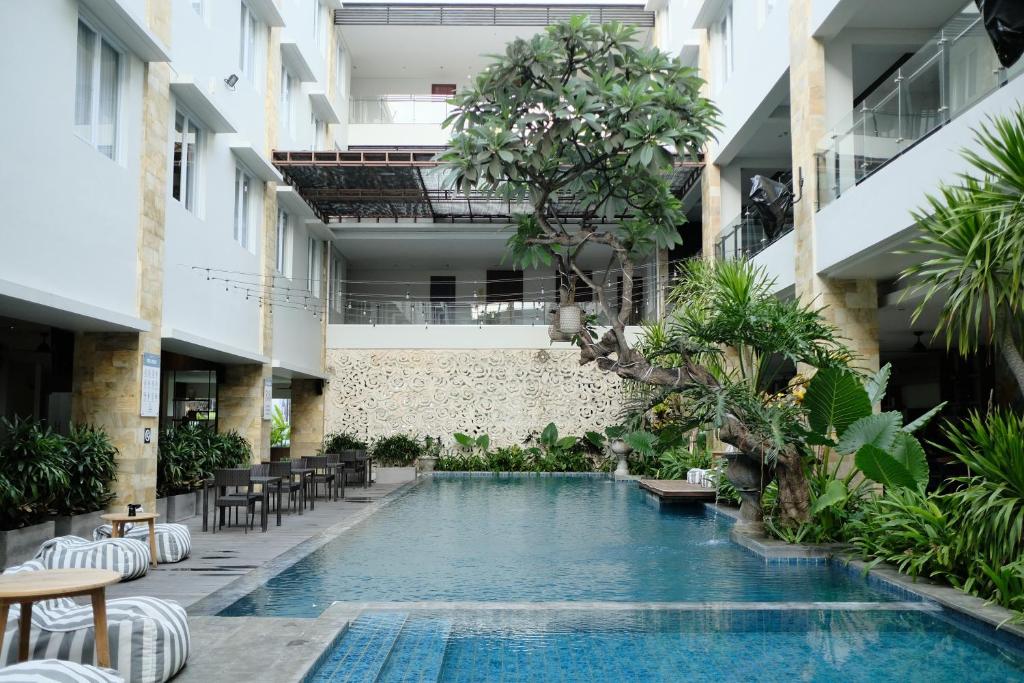Dreaming of a paradise holiday in Indonesia, but afraid of high prices? Good news: travelling to the popular resort can be quite affordable if you know the right approaches to planning. In this article we will reveal the secrets of budget travelling to Bali. You’ll learn how to find bargain accommodation, dining and entertainment options to enjoy the island without hitting your wallet.
From words to deeds: real ways to save money in Bali
Theory is good, but what does a budget holiday to Bali look like in practice? It’s all about everyday decisions and little tricks about accommodation, transport, food and entertainment. Let’s take a look at specific ways, proven by many travellers, that allow you to enjoy the island without overpaying.
Secrets of budget travelling in Bali
 These methods are tried and tested by thousands of travellers who choose freedom over a travel agent. They don’t require sacrifice – just a little flexibility and mindfulness. Practical ways to save money work right here: where small habits add up to big savings. Each item is a concrete tool that cuts costs without compromising on the experience:
These methods are tried and tested by thousands of travellers who choose freedom over a travel agent. They don’t require sacrifice – just a little flexibility and mindfulness. Practical ways to save money work right here: where small habits add up to big savings. Each item is a concrete tool that cuts costs without compromising on the experience:
- Book accommodation through local chats – savings of up to 30%.
- Use a motorbike instead of a taxi – minus $5-10 per day.
- Buy fruit from markets rather than supermarkets – 2-3 times the difference.
- Meals at warungs are $2-3 a day instead of $15.
- Going to free beaches and festivals is $0 vs $20 per tour.
- Combine tour itineraries – saving up to $40 per trip.
- Use the GoJek and Grab apps – fixed, fair prices.
The secrets of budget travelling in Bali are in rationality, flexibility, and the ability to find pleasure in variety rather than costliness.
Lodging – $70 a week
Cheap accommodation in Bali can be found in every tourist area. A guesthouse with wi-fi, a fan and a private bathroom costs about 150-180 thousand rupiah per day ($10-12). When renting for a week, hosts often give discounts of up to 20%. Thus, the price for 7 days ranges from 1-1.2 million rupees, which is equivalent to $65-$70. Opting for gesthouses or rooms in local houses reduces costs and allows you to immerse yourself in the culture. Many options offer free breakfast, another way to save money.
Transportation – $20 per bike
Cheap transport in Bali is not an alternative, but the norm. Renting a motorbike for a week costs Rp 600-800,000 ($38-52). If you pay directly to the owner, the price drops to $20-25. In Changgu and Ubud, the bike remains the most cost-effective and convenient transport. A full tank (2.5 litres) costs Rp25,000 ($1.6) and is enough for 3-4 days. The secrets of budget travelling in Bali advise against renting a car – traffic jams, cost and parking make it unprofitable.
Food – $40 a week
Cheap food in Bali provides not only savings but also gastronomic variety. One meal in a warung costs 15-25 thousand rupiah ($1-1.7). With three meals a day in such cafes, the cost is 45-75 thousand rupiah per day ($3-5). For seven days, that’s about $35. Adding fruits and light snacks from the market (for example, bananas – 7 thousand rupees/kg, mangoes – 12 thousand rupees), the total amount will be no more than $40. Secrets of budget travelling in Bali advise alternating warungs with supermarket and street food. This approach preserves variety and reduces the cost of food.
Entertainment – $15 a week
Free entertainment in Bali makes holidays affordable without compromising on the experience. Most beaches are open 24 hours a day and there is no charge.

Terrace walks, dawn yoga, markets and waterfalls are often available for free or for a donation. Entrance to Kantolempang waterfall is Rp 10,000 ($0.7), and at Uluwatu sunset only parking is charged at Rp 3,000. For a week’s entertainment with trips, natural locations and cultural events rarely exceed $15. The practice of affordable holidays suggests to check in advance the schedules of festivals and free events around the area.
Excursions – $30 for 2-3 packed outings
Low-cost holidays also include organised excursions – the main thing is not to take them from street vendors. Online booking through local aggregators reduces the price by up to $10-15 per tour. Self-guided itineraries bring even more savings. Climbing Batur with a guide costs $25. On your own, it’s only $5 for entry and $2-3 for transfers. A combination tour with Tirta Empul Temple, Tegenungan Waterfall and Ubud Terraces costs $10 if you hire a bike. Budget travelling secrets advise planning itineraries in advance and combining locations by district. This approach reduces travelling costs and makes for a fuller day.
Maximum at minimum
You can spend $175 for a week on everything: accommodation, food, transport, excursions, beaches, entertainment. At the same time, the holiday does not lose its intensity, beauty and comfort level. The average price of a week package tour through agencies – from $1100 without excursions, with restrictions on routes and food. The secrets of budget travelling to Bali reveal an alternative approach – flexible, independent and economical.

The approach allows you to save money, get a feel for the island, understand its rhythm and enjoy your holiday on your own terms.
Secrets of budget travelling in Bali: insights
 Holidays do not depend on the amount of money in your wallet. Proper budget allocation reduces spending on accommodation, food, transport and leisure activities. The intensity of the trip remains the same. It’s not the amount of money spent that matters, but the way expenses are structured and controlled. A rational approach turns every expense into an investment of comfort, freedom and experience. Thoughtful steps allow you to discover the resort in its entirety – without compromise or financial pressure.
Holidays do not depend on the amount of money in your wallet. Proper budget allocation reduces spending on accommodation, food, transport and leisure activities. The intensity of the trip remains the same. It’s not the amount of money spent that matters, but the way expenses are structured and controlled. A rational approach turns every expense into an investment of comfort, freedom and experience. Thoughtful steps allow you to discover the resort in its entirety – without compromise or financial pressure.
 en
en  ar
ar  de
de  es
es  fr
fr  nl
nl  ru
ru  hi
hi  it
it  pt
pt  el
el 










